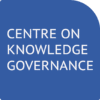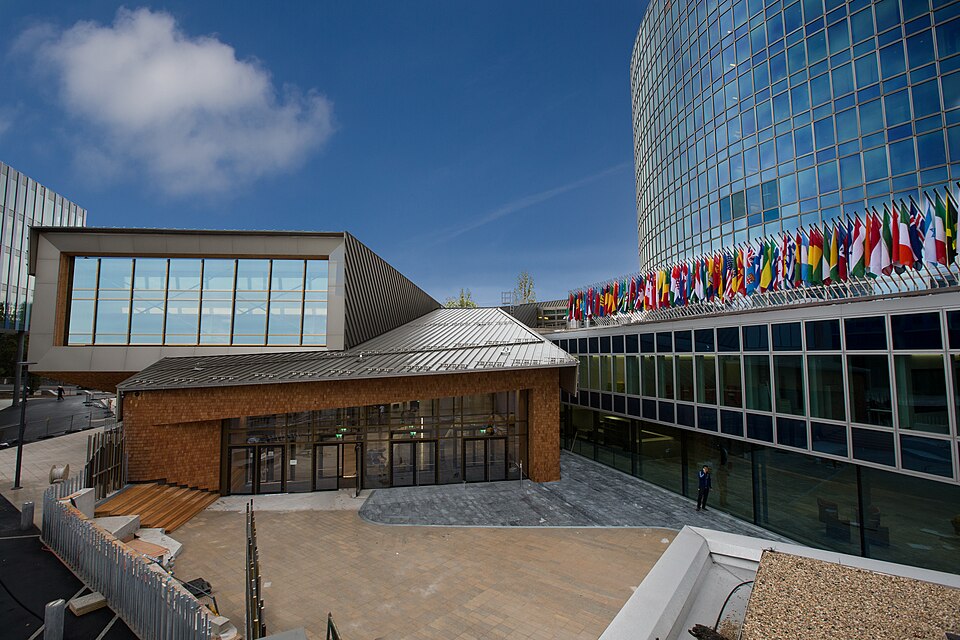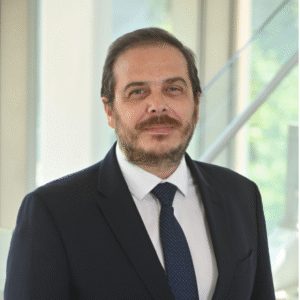Sean Flynn, Luca Schirru, Talia Deady
The World Intellectual Property Organization (WIPO) held its General Assembly (GA) this week, including a review of the progress and recommendations of the Standing Committee on Copyright and Related Rights (SCCR). The GA affirmed its mandates to the Committee to continue working on instruments on the protection of broadcasting organizations and limitations and exceptions (L&Es) for libraries, archives, museums, education and research institutions, and for people with disabilities other than visual impairments. Analysis of the statements of regional groups and delegations shows that there is a growing consensus for conclusion of the Broadcasting Treaty under a narrowed form and for pairing it with progress toward at least an instrument on L&Es. This article summarises and analyses the statements of delegations on the SCCR’s work. A companion article provides fuller excerpts of the statements quoted here.
Context
The GA is the apex decision-making body of WIPO. Among other work, at each meeting, the Assembly reviews and affirms or alters its mandates to Standing Committees on the ongoing work. The SCCR is operating under two sets of mandates from the General Assembly.
Decisions from 2006 and 2007 instruct the Committee to seek “agreement on objectives, specific scope and object of protection” on a basic text of a treaty for the protection of broadcast organizations (WO/GA/34/16, 2007) “confined to the protection of broadcasting and cablecasting organizations in the traditional sense” and “based on a signal-based approach” (WO/GA/33/10, 2006).
A decision from 2012 instructs the Committee to work toward an “appropriate international legal instrument or instruments (whether model law, joint recommendation, treaty and/or other forms)” on uses by libraries, archives, museums, educational and research institutions, and persons with other disabilities (WO/GA/41/14). In SCCR 43, the Committee adopted a Work Program on Limitations and Exceptions (SCCR/43/8), including a process to draft “objectives, principles, and options” for instruments.
SCCR agendas regularly include work on a number of other agenda items, most of which have been approved in some form by GAs for SCCR discussions, but only Broadcasting and L&Es are subject to GA mandates for the drafting of international instruments.
Broadcasting Organizations
Consensus for Concluding a Treaty
There continues to be a consensus within the SCCR in favor of concluding the Broadcast Treaty, with many calling for more speed in reaching a conclusion. The groups and countries that spoke in favor of concluding a Broadcasting Treaty included the Asia Pacific Group (APG), Group B, Central European and Baltic States (CEBS), Group of Latin American and Caribbean Countries (GRULAC), African Group (AG), China, European Union (EU), Colombia, Iran, Russian Federation, Mexico, United States, Japan, India, Malawi, Kenya, Saudi Arabia, Algeria, Cameroon, Botswana, France, Kazakhstan, South Africa, Algeria, and Samoa.
Several statements called for speeding progress toward the Treaty’s conclusion. France called for “the Committee to speed up in a constructive manner the work on the draft Treaty.” The Russian Federation called for the Committee “to step up work on the draft WIPO Treaty.” The African Group, Cameroon, Botswana, Kenya, and South Africa expressed concern on the slow progress of work of the SCCR on both broadcasting and L&Es.
Several speakers explicitly endorsed a Diplomatic Conference in the near term. These included both CEBS and the EU, which each mentioned their long-term support for convening of a Diplomatic Conference. China expressed a desire to reach “an agreement on substantive issues … to lay a foundation for the convening of a Diplomatic Conference.” Saudi Arabia specifically supported “holding two sessions in 2025 regarding protecting broadcasting organizations because this will bridge gaps among Member States and will pave the way in order to hold a Diplomatic Conference on this matter.”
The Asia Pacific Group, however, urged “continued constructive engagement … without prejudging whether the Committee is in a position to recommend the convening of a Diplomatic Conference.”
Debate Over the Internet Provisions
The main sticking point on the Treaty has long involved the provisions that extend to Internet streaming.
The countries of the EU and CEBS, which support the Internet provisions, have supported convening a diplomatic conference on the current draft text. The EU expressed its support for a “worthwhile” Treaty “which responds to the technological realities of the 21st century.” Similarly, the CEBS group expressed support for a Treaty that “reflects the technological realities of the 21st century,” is “future-oriented,” “accommodates the challenges posed by the digital environment,” and “provides equal protection for transmissions over computer networks.”
Many of the groups and countries signaled their opposition to the Internet provisions by calling for closer adherence to the 2006 and 2007 GA decisions.
The US was most explicit in its objections. It stated that the current draft text “exceeds the General Assembly mandate with its inclusion of articles that provide a new right of fixation and that protect signals used in making available to the public stored programs.” It called instead for the Treaty to be “limited to providing traditional broadcasting organizations with a single exclusive right to authorize simultaneous retransmissions to the public of their linear broadcast signals.” Referring to the terms of the 2007 GA’s prerequisites for the recommendation of a diplomatic conference, the US argued that there continue to be “significant questions and concerns … regarding the proposed instrument’s objectives, rights to be granted, and scope of protection.” Accordingly, it called for “much more work” on “these fundamental issues” to make the draft text “acceptable to all Member States.”
Japan echoed the statement of the US in observing “different views among Member States on the fundamental issues” and opined that “a flexible approach is needed allowing each Member State to join the treaty while taking into account international and regional circumstances.”
The Asia Pacific Group, represented by Pakistan, recognized “the need to narrow gaps and build consensus in line with the mandate of the Committee.” Iran called for “moving the Committee closer to fulfilling the 2007 General Assembly mandate … limited to the traditional broadcasting organizations and based on a signal-based approach.” Mexico similarly called for an approach “focusing on signal protection,” opining that a “technical and focused approach is best placed to help seek broad consensus.” Saudi Arabia similarly called for a “focus on protecting signals against piracy without expanding that scope too much.”
Endorsement of Further Work on “Public Interests” and Limitations and Exceptions in the Broadcast Treaty
Several countries called for more work on the Treaty’s public interest aspects, including its L&Es provisions. India called for more work on “the development needs and public interests concerns of the Member States.” Algeria called for work “ensuring that the interests of all stakeholders, creators, users and broader public are duly taken into account,” including “safeguarding public interests … as well as ensuring appropriate limitations and exceptions.” Kenya supported a “Broadcasting Treaty that is fair and balanced and takes into account the interests and concerns of all Member States.” China called for more work “to promote discussions on exceptions and limitations.”
Linking Broadcast Treaty with Limitations and Exceptions Instrument
The African Group and its member states expressed their position that there should be “balance in negotiations in the SCCR,” and “the discussions on the broadcasting treaty and limitations and exceptions [should] move together.” Cameroon explained that the goal should be “adoption simultaneously” of instruments on L&E and Broadcast. Kenya similarly called for the work on the two instruments to be “in tandem.”
Limitations and Exceptions
Consensus to Begin Text-based Work
On Limitations and Exceptions, the statements reflected a consensus for the Committee to begin work on a draft instrument in some form that could met the 2012 GA mandate to work toward an “appropriate international legal instrument or instruments (whether model law, joint recommendation, treaty and/or other forms)” (WO/GA/41/14).” In SCCR 46, the Chair agreed to draft a “document” to move forward deliberation on a possible instrument. Presumably, this would be a document on principles, objectives, and options as called for in the Work Program. Many groups and countries referenced looking forward to engaging in such a document and referenced their support for the Work Program adopted in SCCR 43 (SCCR/43/8).
The African Group continued to be the strongest and most explicit proponent of work toward an instrument. In the past, the African Group has expressed its long-held preference that the instruments to fulfill the GA mandate should be in the form of a binding treaty. But at the 2025 GA, the position of the regional group was more nuanced, calling for “work towards an appropriate international legal instrument.” The group called “for the beginning of text-based negotiations of the proposed draft instrument on this very important subject to effectively deliver on this subject matter as soon as possible.”
Saudi Arabia was the only member to explicitly call for a binding instrument on L&Es. Saudi Arabia stated that “it is crucially important to reach a legally binding instrument striking a balance between the rights of right-holders and the needs of beneficiaries.”
GRULAC, some of whose members (namely Chile, Brazil, Nicaragua, and Uruguay) launched the original proposal for work related to L&Es (SCCR/16/2), reiterated the importance of “work in trying to reach a consensus … to improve the education and protection of cultural heritage and educational purposes, particularly for those with disabilities.” Brazil, which in SCCR 46 endorsed the goal of adopting a joint recommendation on L&Es, also spoke to “reiterate our support for the agenda on limitations and exceptions.”
Pakistan, as coordinator of the APG, supported “meaningful work” to “advance the implementation of the work program” and “welcome[d] the consensus within the Committee to continue discussions on this important item and support endeavors to advance the implementation of the work program.” India spoke to “commend the Committee’s continued work … as mandated by 2012 General Assembly and support the preparation of a document for discussion at SCCR 47”; as did Iran (“We look forward to further discussion on this matter, in particular on the document to be prepared by the Chair”).
Group B supported “the scope and parameters as identified in the work program adopted at SCCR 43.” The EU, which for a time opposed all normative work on L&Es, expressed that it was “ready to continue to engage constructively … on the basis of the work program agreed at SCCR 43.” While reiterating its opposition to “work towards legally binding instrument,” it supported “reflection on possible nonbinding instruments.” The US also endorsed work on a non-binding instrument, including to “facilitate the development of high level principles and objectives or best practices to assist Member States craft and improve national copyright exceptions and limitations.” (See the US proposal for principles and objectives on L&Es, SCCR/44/5).
The CEBS group, which, along with the EU, has often been the most resistant to work on an L&E instrument, also expressed that “we are open to exploring possible nonbinding instruments and best practice tools.”
Digital and Other Issues
Many groups and countries supported various proposals for new standing agenda items. GRULAC, supported by Colombia, Brazil, and Mexico, highlighted the growing urgency of addressing copyright issues related to the digital environment, including in artificial intelligence, with calls to establish it as a standing agenda item. Examining the issue of copyright and artificial intelligence was supported by many delegations, including Group B, CEBS, the APG, China, the EU, the Republic of Korea, the Russian Federation, Kazakhstan, Eswatini, and Japan.
Not all of the supporters of the digital agenda item agreed that it should be added to the permanent agenda. While the EU “welcome[d] pursuing the exchange of information on copyright and artificial intelligence,” and are “ready to continue exchanges of information on issues related to the draft work plan for copyright in the digital environment,” they opined that “achieving tangible progress on the two current standing agenda items … should be the priority … before adding any new permanent agenda item.” South Africa and Panama also cautioned against expanding the agenda before advancing the Broadcasting and L&Es agendas.
While the digital proposal appears to have the broadest support, others proposed rival items for the standing agenda. CEBS, France, South Africa, Kazakhstan, Malawi, Morocco, India, and the Republic of Korea supported adding the issue of artists’ resale rights as a permanent agenda item. Côte d’Ivoire, backed by the African Group, Kenya, Malawi, and Algeria, advocated for a proposal to enhance the protection and recognition of audiovisual creators. The Russian Federation pushed for including theatre directors’ rights on the standing agenda. Samoa called for SCCR’s agenda to be coordinated with work of the IGC on traditional knowledge and cultural expressions.
Conclusion
Although the SCCR meeting began with expressions of frustration, and even bitterness, from the Secretariat at an inability to make progress, the statements of delegations, which largely mirrored positions in the last several SCCR meetings, continued to define relatively clear zones of consensus that could be acted upon. There would be little opposition to concluding a broadcasting treaty that removed post-fixation rights more applicable to streaming than traditional broadcasting, at least once its limitations and exceptions provisions are improved. And there would be little opposition to concluding a limitations and exceptions instrument, at least if it takes the model of a soft law instrument such as a joint recommendation. Indeed, progress on both of these items together appears necessary for concluding either, as well as to make space on the agenda for substantial work on other areas, such as copyright and artificial intelligence, and other digital issues that appear to have broad support.
Ultimately, the GA decided to stay the course, concluding:
“The WIPO General Assembly took note of the report on the Standing Committee on Copyright and Related Rights, document WO/GA/58/4, and directed the SCCR to continue its work regarding all ongoing issues reported in document WO /GA/58 /4.”










